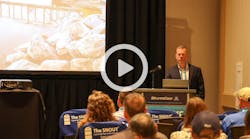
While Florida, Texas, Georgia, and other southeastern states are dealing with an overabundance of water and wind, much of the West is burning. By one estimate, 76 wildfires are now raging on more than a million and a half acres in the US; and 139 more are burning in British Columbia, which is having a record-setting bad year. Many of us here at Forester were in Seattle two weeks ago for the StormCon conference, and people there were complaining about falling ash and watering eyes from fires in that area. What once was an exceptional event has now, as Michelle Nijhuis notes in this New Yorker article, become a chronic condition.
For many of us, the effects of the fires have become familiar and—unless we’re too close—mostly just a nuisance. “Sticky white ash coats the laundry outside, packages are delayed, major roads are closed, and outdoor recess is cancelled. The sunrises and sunsets are lurid. The streets are unusually quiet—everyone is staying inside as much as they can—but the smoke sneaks around windows and doors, and the smell is inescapable. We cough and rub our eyes and hope for the wind to stop,” writes Nijhuis.
The article tells the story of the witness who actually saw the start of Oregon’s Eagle Creek fire, and the subsequent hunt for the teenagers who set it with some ill-timed fireworks. Although they might have been the immediate cause, the conditions that allowed that fire and others to spread so quickly are more complex. We’ve encroached into the wilderness and have built houses in remote areas that now must be protected. Where once, long ago, we might have let the fires burn in a natural cycle that periodically cleared out the excess deadwood, we now aggressively suppress many fires, and this practice creates a storehouse of fuel. When fires do start—because of lightning, fireworks, careless campers, or some other cause—they often burn bigger and hotter than before, damaging the soil and leaving swaths of bare and erosion-prone ground.
This article from Erosion Control looks at the historic practices—very different from today’s—of controlled burning. “In the early 1900s, after a series of dry years and a spate of severe wildfires, ‘a whole series of policies were adopted restricting the use of fire and focusing on rapidly extinguishing every wildfire, whether it was caused by nature or man,’” says a land manager quoted in the article. In some places, we’re reversing that trend, trying to allow fires to burn when we can in places where buildings and other infrastructure aren’t threatened.
In the face of sea level rise—and especially now, as we contemplate the damage of storms like Harvey and Irma—some are proposing a policy of withdrawal from the most vulnerable coastal areas. This practice of “rolling back” is especially catching on in the UK and elsewhere. Do you think it’s possible or desirable to do the same thing with forested lands—to implement zoning that restricts development near certain wilderness areas? Share your thoughts in the comments below.
Update 9/12/17:
In a memorandum today addressed to bureaus, superintendents, and land managers within his department, Interior Secretary Ryan Zinke addressed this issue. In part, the memo reads
It is well settled that the steady accumulation of vegetation in areas that have historically burned at frequent intervals exacerbates fuel conditions and often leads to larger and higher-intensity fires. These fires are more damaging, more costly, and threaten the safety and security of both the public and firefighters. In recent fire reviews, I have heard this described as “a new normal.” However, that does not mean that we should continue to address our challenges in the same ways that we have in the past. We must think differently about the threat of wildfire and how we manage public lands in ways that integrate fuels reduction – where it makes sense – into all our activities…. Even as fires continue to burn, I ask that you think about a different way of managing public lands to better incorporate fuels management into your resource-management planning.
Zinke specifically recommends thinning vegetation and removing dead or dying trees near structures before fires break out and clearing vegetation where it has encroached into roadways. If personnel aren’t available to do the work, the memo says, it can be contracted to the private sector.
An accompanying press release notes that so far in 2017, 47,700 wildfires have burned 8 million acres across the country.
You can read the full memorandum and the department’s press release here.
About the Author
Janice Kaspersen
Janice Kaspersen is the former editor of Erosion Control and Stormwater magazines.

